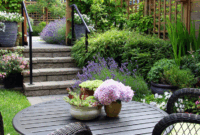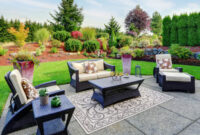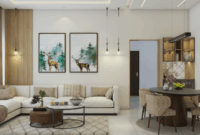In 2025, the debate between prefab homes and traditional housing has reached new heights. As housing costs rise and environmental concerns grow, many homeowners are turning to modular homes as a modern, efficient, and cost-effective alternative to conventional construction. But are these modern housing trends truly the future, or does traditional housing still hold the upper hand?
This article explores the pros, cons, and long-term implications of both housing types. Whether you’re considering building your first home or investing in real estate, understanding the differences between prefab and traditional homes will help you make an informed choice for your lifestyle and budget.
1. Understanding the Difference Between Prefab and Traditional Homes
Before diving into comparisons, it’s essential to clarify what prefab homes actually are. “Prefab” stands for “prefabricated,” meaning that the home’s sections are built in a factory and then transported to the building site for assembly. These homes can include modular homes, manufactured homes, and panelized homes.
In contrast, traditional housing (or stick-built homes) are constructed entirely on-site, with materials delivered and assembled piece by piece. This conventional approach allows for complete customization but typically requires more time and money.
According to National Association of Home Builders (NAHB), prefab construction now accounts for nearly 10% of new single-family homes in the U.S., and the number continues to rise due to its speed and affordability.
Pro Tip: To see how prefab designs are evolving, check out ArchDaily’s collection of modern prefab architecture for inspiration.
2. Construction Time and Efficiency
One of the biggest advantages of modular homes is their construction efficiency. Because components are built indoors, weather delays are virtually eliminated. The entire process — from design to move-in — can take as little as three to four months. By contrast, traditional homes often require eight months to over a year to complete.
For example, companies like Blu Homes and Method Homes use cutting-edge technology to pre-build home modules in controlled environments, ensuring precision and speed. Once the sections arrive on-site, assembly takes only a few weeks.
Traditional homes, while offering full design flexibility, are vulnerable to weather disruptions, labor shortages, and material delays—all of which can significantly increase both the timeline and cost.
To learn how smart automation improves home efficiency, visit our internal post on How to Create a Fully Automated Smart Garden.
Pro Tip: Modular construction is ideal for areas prone to harsh climates or tight deadlines since most of the work happens off-site.
3. Cost Comparison: Prefab vs. Traditional Housing
When it comes to affordability, prefab homes usually win. The streamlined production process, bulk material sourcing, and shorter build times result in lower overall costs. On average, prefab homes cost between $100 to $200 per square foot, while traditional homes typically range from $250 to $400 per square foot, depending on location and finishes.
Companies like Clayton Homes and Connect Homes are leading the way by offering affordable, customizable prefab designs that rival luxury traditional homes at half the price.
However, traditional homes may offer better long-term appreciation due to their perceived permanence and resale value. Some banks and appraisers still undervalue prefab properties, though this is rapidly changing as public perception shifts.
Pro Tip: Consider your local housing market and zoning laws before deciding—some regions offer better financing options for traditional homes.
4. Sustainability and Environmental Impact
In an era of modern housing trends focused on sustainability, prefab homes shine. Because construction happens in controlled environments, waste is minimized, and materials are reused efficiently. Many prefab builders also prioritize eco-friendly materials and energy-efficient designs, aligning with the principles of sustainable living.
For instance, LivingHomes builds zero-energy prefab houses with solar panels and non-toxic materials. These homes are designed to reduce carbon emissions and energy bills over time.
By contrast, traditional housing methods often lead to significant waste due to on-site material cuts, inefficient energy systems, and longer construction times. However, with green building certifications like LEED, traditional homes can still meet sustainability goals—but at a higher cost.
Internal recommendation: Read our related article on Net-Zero Homes: The Future of Sustainable Living to explore this topic further.
Pro Tip: Look for prefab manufacturers offering eco-certifications or smart home integrations to maximize your energy savings.
5. Design and Customization Flexibility
One common misconception about prefab homes is that they all look the same. Today, that’s far from the truth. Modern modular construction allows for extensive customization—from layout and materials to finishes and smart home features. Builders use advanced 3D modeling software to tailor homes to the buyer’s preferences.
For example, Kithaus offers minimalist yet highly customizable prefab units that can serve as primary residences or backyard offices. These designs appeal to both urban professionals and eco-conscious families.
While traditional housing still offers the highest degree of customization, it comes at a steep price. Every design change requires new permits, additional labor, and sometimes weeks of delay. Modular construction, on the other hand, makes customization faster and more affordable.
Pro Tip: Choose modular builders that allow hybrid designs—combining prefab efficiency with traditional architecture aesthetics for a best-of-both-worlds solution.
6. Durability and Maintenance
Many assume that prefab homes are less durable than traditional houses, but modern construction techniques have changed that perception. Modular homes are engineered to withstand transport and assembly stress, often making them stronger than stick-built homes.
According to a U.S. Department of Housing and Urban Development (HUD) report, prefab homes that meet federal standards can last as long as traditional structures—sometimes even longer due to superior precision and material consistency.
Maintenance-wise, prefab homes are easier to repair and modify because components are standardized. In traditional homes, repairs may involve more invasive and costly work due to structural variations.
However, it’s worth noting that older modular homes built before modern standards may lack durability. Always verify a manufacturer’s quality certifications before purchasing.
Pro Tip: Opt for prefab homes with reinforced steel frames and weather-resistant exteriors for long-term stability.
7. Investment and Resale Value
When it comes to resale value, traditional homes have historically held an advantage because of market familiarity. Buyers often perceive them as more permanent and customizable. However, the gap is closing fast as modular homes gain recognition for their quality and design flexibility.
Real estate experts from Realtor.com suggest that modern prefab homes in desirable locations now sell for comparable prices to traditional houses. As eco-conscious and minimalist lifestyles grow, demand for prefab homes will likely continue to climb.
Investors are also leveraging prefab communities as profitable ventures. The ability to build faster means quicker returns, especially in high-demand rental markets. Meanwhile, traditional housing remains a solid long-term investment for buyers seeking legacy properties or full creative control.
Pro Tip: When considering resale potential, prioritize location and design appeal—factors that affect both prefab and traditional property values.
8. Which Is Better for You?
Choosing between prefab homes and traditional housing depends on your priorities. If you value speed, cost efficiency, and sustainability, modular homes are a clear winner. They’re perfect for first-time buyers, eco-conscious families, and investors seeking affordable entry points into real estate.
However, if you want maximum customization, traditional craftsmanship, or plan to build in an area with strict zoning regulations, traditional housing may be a better fit. It offers the timeless aesthetic and long-term market stability many homeowners seek.
Ultimately, the rise of modern housing trends is reshaping how we view homeownership. Prefab no longer means compromise—it means innovation, speed, and sustainability for a changing world.
Final Thoughts: The Future of Homebuilding
The future of housing is not about competition but collaboration. As modular homes evolve with advanced technology, and traditional housing integrates smart and sustainable systems, the two worlds are merging. By 2030, experts predict that prefab construction could account for 25% of all new homes built globally.
For homeowners and investors alike, embracing modern housing trends means prioritizing efficiency, affordability, and environmental consciousness. Whether you choose prefab or traditional, one thing is clear — the future of housing is smarter, greener, and more accessible than ever.
To explore sustainable housing further, check out Net-Zero Homes: The Future of Sustainable Living and Why Tiny Homes Are Becoming Big Business in 2025.




